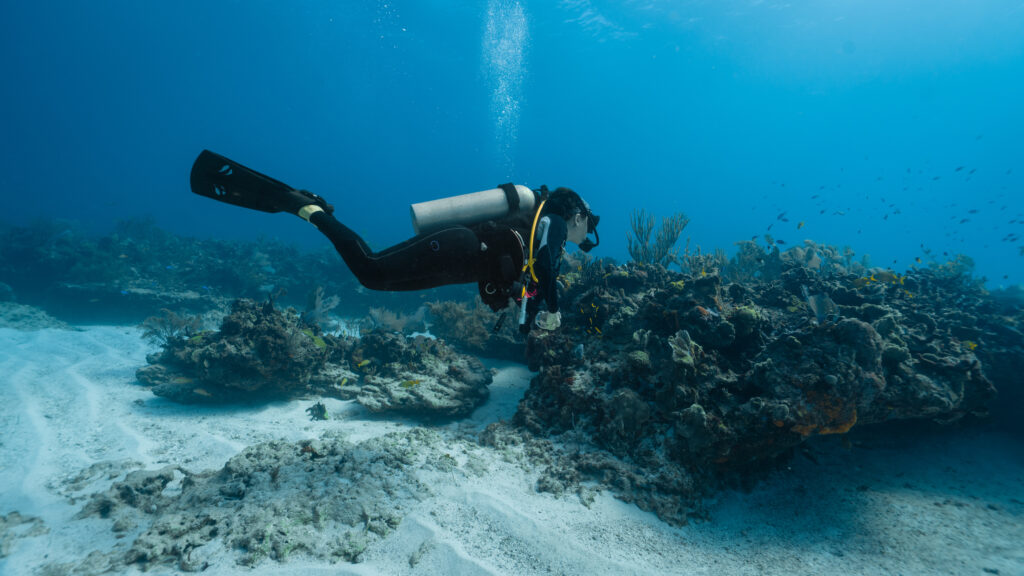What is Absolute Pressure in Scuba Diving Context?

Absolute pressure, a term frequently used in the field of scuba diving, refers to the total static pressure at a particular point. It is a vital concept that divers need to understand and appreciate to ensure safety during their underwater adventures. In technical terms, absolute pressure is the sum of the atmospheric pressure and the pressure due to any fluid column above the point of measurement. It is always measured relative to a perfect vacuum, which is devoid of all matter and hence bears a pressure of zero.
What is the Auto-Closure Device (ACD)?

The Auto-Closure Device (ACD) represents a significant advancement in scuba diving technology, specifically within the realm of diving regulators. This device automatically seals the regulator’s first stage when it is detached from the cylinder, preventing water, contaminants, and particulates from entering the system. By maintaining a clean and dry first stage, the ACD significantly enhances the reliability and longevity of scuba equipment, thereby improving diver safety. This entry delves into the origins, technicalities, functionalities, and safety implications of the ACD, illustrating its crucial role in modern scuba diving.
What is Activated Carbon in Scuba Diving?

Activated carbon, also known as activated charcoal, is a form of carbon processed to have small, low-volume pores that increase the surface area available for adsorption or chemical reactions. Primarily known for its ability to filter and purify, activated carbon plays a crucial role in various industrial applications, from water treatment to air purification. In the context of scuba diving, this material is instrumental in ensuring that divers breathe clean, uncontaminated air. Its ability to adsorb toxic gases and impurities makes it an essential component in scuba tanks and rebreather systems.
What is an Adjusted No Decompression Limit?

Adjusted No Decompression Limit (ANDL) is a time calculation used in scuba diving to manage a diver’s exposure to nitrogen during repetitive dives. Essentially, it’s the adjusted maximum duration that divers can stay at a certain depth without needing decompression stops during their ascent. This time limit is influenced by the residual nitrogen accumulated in the diver’s body from previous dives.
What is a Automatic Diluent Valve (ADV)?

The Automatic Diluent Valve (ADV) is a critical component in the configuration of modern rebreather systems used in scuba diving. This device automatically adds diluent gas to the breathing loop to maintain the correct volume and optimal gas mixture, ensuring the diver’s buoyancy and safety at varying depths. The importance of the ADV in facilitating longer, safer dives cannot be overstated, making it an essential study for divers and technicians alike.
What is Arterial Gas Embolism (AGE)?

Arterial Gas Embolism (AGE) is a potentially fatal complication that can occur during scuba diving, characterized by gas bubbles entering the arterial circulation. When these gas bubbles block blood vessels, particularly in the brain or heart, it can lead to immediate symptoms and rapid clinical deterioration.
What is Aggressive Decompression when Scuba Diving?

What is Aggressive Decompression when Scuba Diving? Aggressive decompression, a pivotal term within the realm of scuba diving, represents a decompression schedule intending to shorten overall decompression time for a given pre-ascent dive profile. This practice operates on a delicate balance, accepting the increased risk of decompression sickness to diminish overall ascent time, which can […]
What is a Lost Buddy Drill?

The lost buddy drill is a critical safety procedure in scuba diving designed to locate a missing dive partner and ensure the safety of both divers. When a buddy pair becomes separated underwater, it is vital to act quickly and effectively to minimize risk. This drill outlines a series of steps to be taken in such an event, focusing on maintaining calm, executing a systematic search, and communicating effectively. The lost buddy drill is an essential part of scuba training and is emphasized for all levels of divers, from beginners to advanced technical divers, due to its potential to prevent accidents and save lives.
What is a Forward Roll Entry?

The forward roll entry, a staple technique for scuba divers, is a safe and efficient way of entering the water from a boat or a pier. As a key skill for divers of all levels, it is essential to master this technique for both safety and comfort. This entry will discuss the benefits of using the forward roll entry, the steps to execute it correctly, and potential hazards and tips to avoid them.
What is an Electro Galvanic Fuel Cell (EGFC)?

An electro galvanic fuel cell (EGFC) is a type of electrochemical sensor used extensively in scuba diving equipment for oxygen monitoring. It operates based on the principle of generating an electrical current through a chemical reaction between oxygen and a fuel, typically a metal like lead or zinc. The current produced is directly proportional to the amount of oxygen present, making EGFCs crucial for ensuring safe breathing gas mixtures in underwater environments. This entry delves into the fundamental principles, historical development, technical specifications, applications in scuba diving, maintenance practices, and regulatory considerations of electro galvanic fuel cells.
